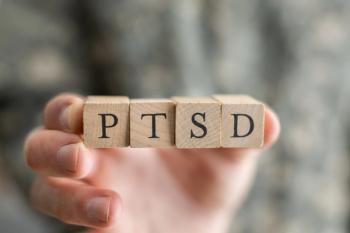
Case Study: Mysterious Pain in Older Veteran
The patient did not just scream for more medication-he literally rolled on the floor, ranting and raving and demanding higher doses. Some may write him off as an "addict," but this case reaffirms the value of studying medicine before practicing psychiatry or psychopharmacology.
WHY PSYCHIATRISTS ARE PHYSICIANS FIRST
1973. Bad, Bad Leroy Brown topped the charts. The song was set in Chicago. America’s longest war, the Vietnam War, just ended. Soldiers were returning home. Superfly and Shaft films graced (or disgraced) the Big Screen while The Godfather (1972) won the Academy Award. Nixon was still in the White House, not yet impeached but sorely tainted by the Watergate scandal. The Yom Kippur war began and ended in October 1973, with Israel the victor and Golda Meir still Prime Minister. Jim Croce, who brought us Leroy Brown, died in a plane crash, also in October.
Then there was me, in medical school, in need of an externship and some extra money, hopefully one that offered extra learning. When a position opened at a novel methadone program at Chicago’s West Side VA, it seemed like a good start. Methadone was big news, having been approved in 1971, but facing severe legal restrictions by 1973. The chair of psychiatry just won a large grant to open a methadone program for vets, not just Vietnam vets, but any vets at all. Of course, Vietnam vets made headlines, for all sorts of reasons, not least of which were concerns about heroin addictions acquired in the jungle.
[[{"type":"media","view_mode":"media_crop","fid":"37772","attributes":{"alt":"geriatric psychiatry","class":"media-image media-image-right","id":"media_crop_9261845532623","media_crop_h":"0","media_crop_image_style":"-1","media_crop_instance":"3740","media_crop_rotate":"0","media_crop_scale_h":"0","media_crop_scale_w":"0","media_crop_w":"0","media_crop_x":"0","media_crop_y":"0","style":"float: right; width: 159px; height: 148px; ","title":"©tomertu-shutterstock","typeof":"foaf:Image"}}]]Four dollars an hour sounded like a good deal in 1973. Plus, the concept of methadone treatment was intriguing. Was drug addiction biological, sociological, psychological, or even political? Who knew back then (and who knows for sure even now)? Genetics as we know it was not on the radar in 1973, although race-based theories about addiction abounded. It sounded like an ideal learning experience, even if the program functioned more like the Wild West than a structured medical school clerkship.
The fact that politics made its mark on this new approach added to the appeal. Political opposition to methadone was strong in 1973. On the other side of the spectrum, the Black Panther party accused politicos of ignoring heroin distribution in Black neighborhoods, to retain control over black citizens rendered placid by poppy by-products. Black Panthers also ran free clinics and screened for sickle cell. The edgy opinions of the Black Panthers were impossible to ignore when working on the West Side of Chicago, especially since group therapy discussions often made mention of Panther pronouncements.
As a med student, I was assigned to perform physicals on prospective patients when they enrolled in the program. It was an interesting experience; I learned to identify “flat affect” by listening to a patient speak in monotone as he described the joyous experience of the birth of his first-born. A more animated heroin-addicted vet spoke in singsong, rhyming each sentence, and spitting out words like bullets. The chair of the VA psychiatry department explained that these patients were self-medicating their symptoms with the psychoactive agent that was most readily available to them at the time: heroin.
Most patients were young and had recently returned from Vietnam, where up to 25% of service men developed dependencies on opium.1 All of our veterans were men and all patients in the program were African-American. There were a few stragglers left from earlier wars.
CASE VIGNETTE
One man, let us call him “Henry,” was so “old” that he had flown in unpressurized planes. The younger men on the unit initially enjoyed hearing his airplane stories-but no one enjoyed hearing him scream for more methadone.
Henry did not just scream for more medication-he literally rolled on the floor, ranting and raving and demanding higher doses. Seasoned addictions counselors paid no attention and wrote off his histrionics to addictive behavior. Younger psychologists on the unit explained his actions in more psychodynamic terms, pointing out that he was “dependent on drugs” and was now “acting like a baby,” and thereby demonstrating more of his “oral-dependent” personality. That answer made sense on the surface.
However, my job was to perform physicals, record them in the charts, as mandated by law, and then write out all the rules and regulations of the highly regulated methadone program. When I performed Henry’s physical, he complained loudly about episodic pain in his legs-even though he had no visible injuries or trauma history. His labs were normal. He had sickle cell trait (SA) but was not anemic and was not a “sickler,” as we called them. His condition seemed far removed from the seriously ill children with sickle cell disease whom I encountered on pediatric wards of the nearby county hospital.
To appease him, I called an ortho consult to examine his legs. Ortho in turn requested X-rays, as per protocol. When I returned to the ward, a team of young orthopods was gasping at X-rays mounted on a make-do light box. The chief resident proudly pointed out infarctions in Henry’s long bones, exactly where he complained of pain. The infarctions reminded him of infarctions in patients with sickle cell anemia.
We double-checked his labs, and confirmed the presence of sickle cell trait, and nothing but. When we reviewed his “military history,” we realized that the hypoxia from unpressurized planes could induce such symptoms in persons who carried the trait. We have learned much more about SA since 1973, but
I felt sick at the thought that this man had suffered so long, not just physically, but psychologically as well. He was ostracized and stigmatized, without recognizing that his heroin use was a response-partially, if not fully-to untreated pain, which was dismissed as “psychological.” Now he was on methadone, just not enough. Ironically, many pain specialists use that same treatment for pain today.
Upon reflection, I would think that this veteran deserved reparations for a service-related injury, rather than the reprimands he received. Medical journals debated the risks of sickle traits in those years,3,4 (and to this day!). The Navy had begun screening a year before,5 but it is likely that the plight of similar soldiers flew beneath the radar for years. It seems that records were reopened as more data about high altitudes or unpressurized planes accrued, and as some sudden mysterious deaths in military recruits were later linked to SA. Pre-induction screening eventually became standard in all military branches.6,7
Discussion
Henry’s case opened many questions, both for Henry and society. It answered one question for me. It reaffirmed the value of studying medicine before practicing psychiatry or psychopharmacology. It was bad enough that the source of Henry’s suffering went unidentified for so long. What if we had parroted the psychodynamic explanations for his crying bouts, without looking further?
Prescribing methadone for his addiction, without tracking the source of his pain, might have dampened his drug seeking-but identifying its medical origin offered an opportunity to change his self-image, as well as his behavior, and to change the way that society saw him. Luckily, psychiatrists are physicians first.
References:
1. Shuster AM. G.I. Heroin addiction epidemic in Vietnam. The New York Times. May 16, 1971.
2. Kark JA, Posey DM, Schumacher HR, et al. Sickle-cell trait as a risk factor for sudden death in physical training. N Engl J Med. September 24, 1987; Revised December 20, 2000 by Kark, John.
3. Kellon DB, Beutler E. Physician attitudes about sickle cell disease and sickle cell trait. JAMA. 1974;227:71-72.
4. Rosner F. Correspondence: The not so harmless sickle trait. N Engl J Med. 1972;286:377-378.
5. McGrew Jr CJ. Sickle cell trait in the white population. JAMA. 1973;224:1762-1763.
6. Lowbeer L. Complications of sickle cell trait. JAMA. 1983;250:360-361.
7. Sullivan LW. The risks of sickle-cell trait. N Engl J Med. 1987;317:830-831.
Newsletter
Receive trusted psychiatric news, expert analysis, and clinical insights — subscribe today to support your practice and your patients.















